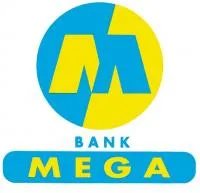
Mega banned: Indonesia’s Mega Bank banned from opening new branches
Mega has weak internal control, and Bank Indonesia isn’t happy about it.
Under Bank Indonesia’s sanctions, Mega is prohibited from opening new branches, from renewing or opening new deposit on call and from offering negotiable certificates of deposits in one year.
Fitch Ratings has placed Bank Mega's National Long Term 'A+(idn)' Rating and subordinated debt 'A(idn)' rating on Rating Watch Negative. At the same time, Fitch has affirmed the bank's Individual rating at 'D' and Support rating at '4'. This follows Bank Indonesia's announcement that it has imposed sanctions on Bank Mega as a result of weak internal control.
The Rating Watch Negative reflects the potential negative impact that the sanctions would have on Bank Mega's business profile and funding.
Fitch believes the sanctions would limit the bank's rapid growth in the medium term. The sanctions would also adversely affect the bank's short and medium-terms liquidity profile given its reliance on time deposits and the less steady nature of this type of funding.
Despite the possibility that the bank's funding may contract, liquidity at present remains reasonably robust given Bank Mega's low loans-to-deposits ratio (55% at end-March 2011). This, together with its adequate capital buffer, has resulted in the Individual rating being affirmed.
Fitch expects to resolve the Rating Watch Negative once there is evidence of improvement of Bank Mega's internal controls and of the impact on the bank's credit profile from the sanctions.
Fitch also notes that the bank must set up an escrow account to cover potential losses of up to IDR191bn stemming from the ongoing dispute between the bank and its depositors, namely PT Elnusa Tbk and Batu Bara district administration. However, Fitch believes that the potential losses can be absorbed by the bank's net profit (Q111: IDR 259bn; FY 10: IDR 952bn).
Bank Mega's ratings are currently based on satisfactory capital position, liquid assets and modest profitability. The ratings also consider its concentrated loan book and small franchise relative to peers. Its total capital adequacy ratio and Tier 1 ratio was 16.3% and 13.9%, respectively at end-2010 (2009: 18% and 15.1%) which are adequate for supporting further loan growth.
Bank Mega was established in 1969 and, at end-2010, was among the 15 largest banks in Indonesia by assets. It was acquired by the privately-owned Para Group in 1996. After a public listing in 2000 and subsequent rights issues, Para Group's stake was diluted to 57.82% at end-2010.




![Lorem Ipsum [ABF 1]](https://cmg-qa.s3.ap-southeast-1.amazonaws.com/s3fs-public/styles/exclusive_featured_article/public/2025-03/a_hand_pointing_to_a_futuristic_technology_5b87c9d0e3_1.png.webp?itok=2w0y1WhS)


![Cross Domain [Manu + SBR + ABF + ABR + FMCG + HBR + ]](https://cmg-qa.s3.ap-southeast-1.amazonaws.com/s3fs-public/styles/exclusive_featured_article/public/2025-01/earth-3537401_1920_4.jpg.webp?itok=WaRpTJwE)







 Advertise
Advertise

